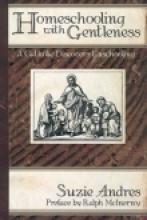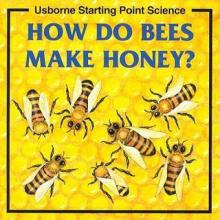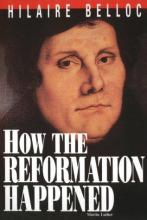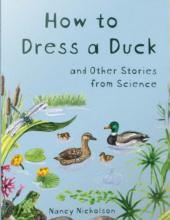No name
Homeschoolers' College Admissions Handbook
Mrs. Cohen provides a great deal of advice (from herself as well as parents and homeschool graduates have successfully gone through the admissions process) on shopping for colleges, the diploma question, portfolios, transcripts, essays (an important aspect of admissions for homeschool applicants), letters of recommendation, testing, and a chapter on how homeschoolers are doing in college.
Although it is important to seek out information from a Catholic perspective as well (particularly with regards to choosing a good college), this book will be very useful to homeschoolers eagerly, but nervously seeking to apply to the college of their choice.
Homeschooling with Gentleness
How Do Bees Make Honey?
A small, inexpensive book filled with pictures and lots of other information picture about bees and other insects. You'll learn how to tell bees apart from other insects, how bees live together in colonies and all about their beehives, how bees communicate with each other (my children have really enjoyed trying to re-enact the bee's dances) and of course how bees make honey. The one thing I didn't like is that the material is so disjointed because it jumps around between different kinds of insects.
How Much Can a Bare Bear Bear?
Homonyms are words that sound and also look alike. But they have different meanings, as in "Can you pass that can, Mike?" Or "May I sail with you in May and coast along the coast?and
Now, some words sound identical but are spelled in different way. These words are known as homophones. Like praise and preys and prays. Though homophones have matching sounds, their meanings aren't the same. And there isn't any question, they're as fun as any game.The homonym and homophone pairs are highlighted in matching colors to make it easy to identify each set. On the whole, we found this book both entertaining and helpful.
How the Catholic Church Built Western Civilization
How the Reformation Happened
This book is a surprisingly readable and interesting account of "How the Reformation Happened". Although it is written from a Catholic perspective, Mr. Belloc is very fair in dishing out the blame to the appropriate people on both sides. The years covered are 1517 (when Martin Luther affixed his protest against the Indulgences to a church door in Wittenberg, Germany) to 1648, but also includes commentary of the implications of the "Reformation" on our own times. He covers all the major countries involved and is very skilled at explaining the essentials of what happened and the lessons we should take from it. This is the answer for homeschoolers looking for the whole story of what is so often misrepresented in History texts – whether Protestant or Secular. It makes good reading for adults who are teaching younger children or for high schoolers to read on their own. Includes a complete index.
How to Celebrate Christmas as a Catholic
This inexpensive booklet ($12.95 for 50) is a good start for those wishing to better understand Catholic customs and a holy celebration of Christmas. You would need to do further research to implement some of the customs in your home, but the information is readily available on the Internet and elsewhere.
full color pamphlet
How to Dress a Duck and Other Stories from Science
This book offers thirty-six stories about God's amazing world that very nicely brings science back to its creator and helps children make connections between faith and reason. We've had the earlier edition of this book for a number of years and I have found many tidbits about nature that were new and very interesting to me - especially information about why God made things the way that he did and what is good and useful about his creation.
This new edition includes many new stories and looks more like a grade school workbook - in size and appearance as well as having space for the students to answer the chapter questions right in the book. In addition to the Catholic content I really like this book because 1. it is loaded with interesting content, 2. it is written in an appealing story-like format, 3. it is not "dumbed-down" or written in a condescending tone like so many textbooks. Here's a brief excerpt to give you a sense of the style and content:
"God has a similar system for supplying water to places that don't get much rain in the summer. Instead of a freezer, God uses tall, snow-covered mountains to store up icy snow. In some mountain ranges, like the Rocky Mountains that stretch north and south across Canada and the United States, peaks often receive thirty or forty feet of snow each year. That is nearly enough snow to bury a Ferris wheel! Even after winter has passed, the cool mountain air allows the snow to melt very slowly. Melting snow slips into creeks and rivers that carry needed water to farms and cities far away. Some of those farms and cities don't get much rain in the summer. Some of them don't even have snow in the winter. But the people who live there are happy to drink and swim in the water that came from God's faraway frozen mountains." (from "Merciful Rain" pgs. 59-61)
This book can be used as a science supplement or as a non-fiction reading comprehension workbook.
How-to Book of the Bible
Editorial Review: Perhaps you know very little about the Bible … or enough to realize there’s so much more to discover! Maybe your previous attempts to read the Bible have not been fruitful, and you don’t get much out of the readings at Mass. You observe the role the Bible plays in the lives of others and feel that you’re missing something. The How-To Book of the Bible, by Karl A. Schultz, is your key to unlocking this treasure. Unlike other Bible-related books, this one not only introduces you to the Scriptures but also helps you develop a deep, fulfilling, and lasting bond with the Bible. I believe this would make a fantastic choice for a high school homeschool student who needs a year of Bible. The format and language will appeal to the young student and in comparison with the dryness of the texts available to homeschoolers, this will shine. I would love to see a workbook companion for this, complete with tests and an answer key!









